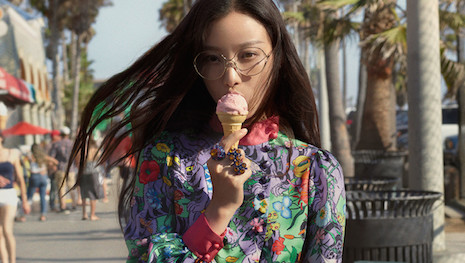By Amish Dargan
To be successful at luxury retail means strategizing and marketing well before a sale is even made.
Thanks to technological advances and higher disposable incomes, luxury is within the grasp of the common man and resulting in changes in market segmentation amongst others. Questions arise such as, “How can you find new customers online?,” “How are you improving the experience for your existing customers?” or “What would customers today find exciting?”
In 2017 itself, the luxury market grew by 5 percent to touch an estimated €1.2 trillion globally, per a Bain luxury study.
As it continues to grow, marketers, retailers and salespeople have come up with novel ways to sell their products. These are some of the best practices currently being employed in the luxury business.
Targeting and customization
Customer segmentation, if done effectively, takes into consideration customer demographics, behavior patterns and preferences. If narrowed down, it can produce exceptionally good results for luxury brands, promotional events and product launches.
Traditional demographics suggest that maximum sales for luxury goods have taken place in the United States and Europe.
However, a report by Deloitte Global predicts that these areas will witness a fall while Asia, Africa, Middle East and Latin America together will see a 50 percent growth in the clothing and footwear category.
Maintaining this customer-focused approach is central to luxury where it is more important than ever to stand out in a socially connected and increasingly competitive marketplace.
While customer experience gets a lot of media attention, understanding consumer wants and needs and designing for them remains one of the most essential tasks for luxury brands.
Brands must also take cognizance of the growing purchasing power of millennials that make up much of today’s buying industry, mostly online.
The growth of the luxury market is being powered by a generational shift that will usher in the millennial and Generation Z crowd with a different mindset. By tailoring your product to the consumer, brands can create a timeless relationship with them.
Millennials seek luxury in everyday items such as T-shirts. The three fastest-growing product categories remain shoes, jewelry and handbags.
Gucci saw its sales rise by 50 percent, led by demand from online-savvy millennials.
The Gen Z and millennial generations will make up 40 percent of the overall luxury goods market by 2025, a jump from 30 percent in 2016.
Staying unique
These days, mass-marketing efforts not only tend to produce poor conversions, but also harm future marketing efforts.
The need of the hour is for relevant, personalized and contextual promotional offers using consumer insights and marketing automation software.
Brands are now able to create highly customized and relevant offerings based on customer data such as demographics, psychographics and behaviors, which helps grow customer acquisition and retention.
By 2026, the number of high net-worth individuals are expected to grow by 50 percent to 503,800 from 2016’s 335,800. With the pool expanding, businesses stand the risk of their brand value getting diluted.
To remain distinct from other brands, production might be stepped back and access to the brand limited.
It might seem counter-intuitive, but increasing the appeal and demand for products has a long-lasting positive effect on the brand. Forty-five percent of luxury customers look for personalized products and services that can represent them wherever they go.
Clienteling
Along with differentiation, the goal for many luxury brands is forming a personal relationship between the customer and the brand.
Brands are selling more than products. They are creating spaces that provide personalized experiences for their customers and invite them to dive deeper.
With the tone set in place, all channels of communication, online or offline, have to deliver a premium, consistent message.
Luxury brands still depend on physical stores to boost sales, but the future lies elsewhere.
A report by McKinsey & Co. states that nearly one-fifth of personal luxury sales will take place online by 2025.
Brands can take a leaf out of Hermés with Maison des Carrés coming up with a novel and premium way to showcase its luxury scarves.
While the sale of luxury goods through the retail channel grew 8 percent in 2017, online sales saw a spike of 24 percent last year, comprising 9 percent of market share.
Brands need to be where the customers are and the new crowd is undoubtedly on digital platforms.
Millennials want to feel valued and brands need to change their business strategy through loyalty programs and in-store event invitations.
When brands take the offline route, each element – from the decor, lighting and location to the brand's online presence – is designed to leave behind an indelible mark in the minds of consumers.
While connecting with the brand and booking appointments, there are now even more luxury brands offering an online shopping experience. Each of these elements deepens the relationship with the customer.
Luxury retailer Fred Segal has been perfecting a new term called “experiential retailing” that involves giving customers a unique buying experience. Not only do people come to shop, but also to listen to music, eat food and hang out with friends.
Taking it further, Giorgio Armani is engaged in an in-store installation collaboration agreement with Colombian artist Marta Luz Gutiérrez, while Louis Vuitton teamed up with Jeff Koons for its Masters Series.
 Amish Dargan is a luxury expert and brand manager at Dufry
Amish Dargan is a luxury expert and brand manager at Dufry
Amish Dargan is a luxury expert and brand manager at Dufry, Toronto. Reach him at [email protected].
{"ct":"sWraCHTN257vv3tC8+OgparYSio\/RpMJZj98E5eiHA5S9j7kJOETnZ9TeGCqph1Fom06Fy6P9p2eHi6ahKtMr2RfCEIUbtUxY3SeynIjA6JS\/3P\/EJxIKJVgP6VB9Hpxst2IN10RAdFE1ePhUGYHikccmqrsspBR4pGhSGk9o9Ep+z1+K1snyGrCYZlCPUxsjP9ZmvL4BSpfO1d5Dn8CSCSM2CCZEVBGfY93CbXRbirNVuYh+DzpQXjZ6jCaX\/uJNxsnL8dzLoHlZ5NH50Km78dxbpXSyI57BX92mK9KWufj4q0ZADwQ174soYYnQID2nKeTYnaPI+P4DQe83okrmfX6s2rpOG9pJCYWTNTC8lhxSDOuyOzAUgIey9tn33pRZhwQ6flmphUkvfmZKf8lI4sn4T1kIHC8AxAEtctMJE5U6gdvypwKTqehECNVuF+LeF+Kj1S59kpFiXskeHA7ToralXlUcqm2Hbd7IpRmQDZgqNoJbaT+RuwzwiJVcrfytuNMLh15LC+SEO4cOM3ijZx2dqQSMvuoa63zv0KaHPixNev3Pkz\/yMI0K\/bsorGwWy2b1jaLzqTidDPxDWHv8FBgOnEqEGAzHUJZZi1qrUVDZ+2sLisHyk\/cvJdlQy72J+dIc1jEZrPXlkpUZlio1Eok95IELLklOL1tRf5+KCw3LWnSVJz5sBu0ilal1bj7Y3UkcKtlkhOD91qneLrC954xA2Uh5iy3X0xRWKKG4UCJwTPz1emc4\/zcf2FLTp0hOHOUkJxXWVED\/6Ap5wAsdFK0HSvPBsWyideCE7ttklot0LiV99CgPB\/m+mK7a6jw3RHKB8ciOgH4JDv336OsFOCXoiyMCCdAZKi0A4zWJyvA6lHRI53LhQ0t+TWRp3cWQdTwyH+cxRxUh1rDTvJzTiIsy7i\/J9evcZEc4vqRKcWRUOhh5CcNsTfB9V7UahYIuujwhHJNrZJLwFdNRegG\/sorPhmA4j3ChVb0pGs6vXWZ3Ri1jCjDcmd076ofWIYxjl0Dym6Hz9G7AhuwM0BVZMibGst9AQznehopz3uUQnHLMynCC2yiVasSbGujerlS+rkBoTvKPugCwc8jZpbDdj7eGkUQ44weq41Oc4UvdSoWK7kjGDw2qJPl1BVFIjCBgPl91bGNfauCWgjTcSV78heejCdofUjE3V6sgUiU5F1NyG1s6QSIUTozIU8gtT9DHwbIk9mIbfyNiRa9mK4ieptegduW4UEmmqVK1PLCTopgrb6LBQ675EbhmgX4Sarl\/cglbkjUvVHL6lvoVpEXYFZdmMauofXr\/+v4lvEK6hMHy2zW5JRIDbTWnksYp74StGZZoS9qC0cawsu3i3iPeDmZ2ROTFbL26kEm3p6VAEmDJxp\/qFON4K0tYwMHgV4XOCz20RQjkGos76YE7K7eHo4Foo6CvdidjJcSEWy200HxHmpFxUZK3QYcQDAUAXlE+aSSWzcyCME3GVv6hIzoju8Hh\/I3LFGKGZDtpvbSeHkzk5ofcLs34mxnbfiCXtJqTcwkOZwa16J\/wtf9gy66E5W4aJWBycwMuG4BtklXvNSt3fl5DVUbvgnP9IMsD9fWe9GkAnvyWt2c2E0ebkF4C0k6R8oesGLTyD0sdd4EvlWnpW1vrUP6p4\/EmJUxcWZ9zGqXdOE+3ig4dmPqcH2G\/UT\/KEHm3o3vlPPewnMrkRjtsSiG44COcTbvgL5U5yqPWxQG7mMxzVWdXsSb0TPOtwJciAH1E9daiAsp56lzPLrv7dRSG7aINhk83xRY1\/ujwxzmWkywMRJ2UrAa3W+SW0DFXpkfcaW+J310oUsWoyJe1SMJayrJgIYjlc4Jd4j9RbwrnR9ub5b5FEd\/HJT1uLxSu561RSBJTu10JVzCkLVtnhG2V28k\/\/ZVZD3nkqFr2FFHXdAMwPhres9rMUYytr3qGGj4QFJL4IJUMVbUWf0pxmNZFNug61ERRWfUwbAJ03nJutjVvnRr1abdtIWEa2+cfSwPvULMJPDrJbId3YZBrl\/ZnU8Nniu6HS1cSR75qWrDdVMMvRVyhb+YnnE+elCVWySpT8LazfmHih5w1hp5fuIZxBfPsVTIiUbkGlL0t9JUYoZSQP57ht0fWmPdjNYxmy8ulg09V7CtqdAsElReT72Blix92\/+ZtAPf13U7G7zydFOmQ4guGKWMCn4Hl\/+tu1kkj12gSUzA\/mHSiZ8j6u4Ui1TbsOG\/RmQx7XyMqfM8Su1xwzNIDi7NrEsIFUrsWpJnRqRPCmM5CKGwyCfcDS6wOb1GalHdW68WaD\/WJxOyuwvUhKrWlYA\/kb8ILJKZtlXSlxrb1z9svhYRiU+1yXKnWFISIk7zGEqjSwhQuxLd8t3bcDGpfe+jkbgiZa7Hdi5bVLid3hyie9wAii0zPD6fiuiA2XY+M9s3ZQmMfTJht+os6KNSR3iXl3Ri2Is59RuBSokXG06Hem5jfvGka5K5XeIk17+x1lw0qPWsh8Da36fC8XLMhRUkdTtoeSe5r69INSNMhcffX4Cr8nSSZStey70Oc2qGs2\/uVXA5qnTO1WkWL\/Gu6rdosOW1V8H4HPBGI6k5ZCh7xA0gsEc9nak649XZ9RAg3YLJD2i+JBPtbbNskTqJoaI\/nu1sc2love+o+OWlkOpXSvsAXK0DGURJ+I3ALtu1KzaaDiH\/JQ2bQ\/TYfWdTlywzUs2My1MuYrAcykjpQnmnnSqtrsPIITkpk9vTCkGJOX6QsbBxxQY71EQjsiWOmmA23dAlpD8lZbXMl60kr81eGq\/V9bwVfoM8BxSdEeRadF\/bioUX221PG9xsFpF\/+rzA0VO9UWEyixf4dN0t81Hqwz3qtOQ6veHpp\/vcdqd\/x1MHMUQnMv8Bu1XaqxA\/a1\/4SwypZpza32IOYCcCSoAGBEsY\/PJdkXY\/CzWSrUbO2hUu8Coz+KRhkG\/29LURYYrawNnrsIYXlqybrwwOMTyMcCV2pXbjsus\/d5p7uQExc22DOvhI1Rij+iKK8kXDqJjWYzv00P0JeMLcYo96\/uUhuagrhG3bfS2rbI4MS1rzbWB0wfNYmkLoHjC1dsQmgTEHWhcSa0zxfW\/VtlxzRhN3DAGBGlz7c4UZePFiex9SNaeTxco7Wgn6kmZWKXnKJXEvkkQfKIdeUG5wAJ75esMQm4+QNkky2GVYOImVqY\/8lo7upfqjJ1HC4AtSJYQmT60XtmjjgrK+v3cIWX6ENI2T9qa7OtsNkiMwPz12MvH402MODZ63FxpZRtl4mLLhVMPYgm7Q9RB\/CwqH0m3t+Ddg8w5PXeO+KSC7OJjZo3T1ZWYlSEB+F7+kdZXwSNFmizhmeFtY7+FRprEkxYw5N3OPB7Fl6qIA7xOWE+pihKybUD1neAN2lbvqoyma1o4DJf5KxzA6RThD7u6TBsyNwUydcd0RFVZ6WKtm5eEeX4z2tK1PXpVdYWv5Nnb6pK6Ehs4hxio01rTrhANTmnrgeSBo669wiDrUK+amGy+CntTWemVyo52oNZUSgYhTPaNzcTbC5MXSb6aC01MlY6jJDVvbOeeAAtJuxm+YWMmbKI+\/AzTA3c3SEllsrt709Ex4+ytw9Iv+P8xxxHsy8L0tdKW\/5bvhgH9j3pTPSSvQA3SdeZOjIFkb4YFa+1KudPMuFUS4g0RMEdtTyrjU32eQfQQIlkTfaCtnG9hS0CEDe25D1r4s\/ZN+q1sRqQ8SlkFTcc9JG4CiNnFGaAI3CXf6lzKMaOlepm+oHNK4P8B1Uj8MRxq2yag5tFJ5xMaAHdj8gwWWxl7w3dB5YjN9tz8HWT8Js8BmJmdZLtGFVaN1zRDpSfSJ2emY266ykHEcxjlYId7fpv6uE67Q1fa69U1lMhoCePR9Qed+NZWuFNXJoNlrLpKvys5qOpJmSLYg0fyhTPJC8qXP3mcpmTyj8fuhYap8bBXNCZBNvuwRBS4xfOqRjN77PiempVxsifBhDmwhYBmrRkrqb\/tLNe9bQ3tGofgcWx6C83BEk+sBxhQivKHhMz4BhK4kA0pIHzPZO9R7Mqnp2LFtR\/ux6Uh2Pnv20GDhiDc99LzQ3sdQUpzH4mh9HYzbwj7YW3vovblhU5tP4Mgx6VHoUOJMU99yQC4jYLGv0Clv3P7K6YqgSlIJ+ghR4IJKev\/cFjsIgf+kWVWn6PvmtNaWDeq0sd9sCp+rR0o5BSdT5tCrc4CbPbtqA+LcBUOYbjaIiC4n7OfflmOD0sI8ATC8QsP24BHvjcKRshnWJiVhv6S6axscj39UX6rWoUZhiaIivscL0eSLI32vwmhVmdmgNgV8Quazddd7ft27Qds1l7CQ6Wm37\/BfQbQuAmw4dzpDEr\/7K96zETPFVTNEkLkGHSlT3Y+XG4pVZZiC8Mth96biKu5\/\/pKrtWVKE6hEzhA7rTyyluUd\/uHP6OLc4wUD9DXbVQnxqiSmHkPJ3eDiPS3fZW89D35Xa9Nnt8WO6KIXBTz1WnpeAInjtdzElNV5SOj\/wzxIXTRU1N0BLq0UnFsI3HsCuktgdjBOPXvMftUHtgdFbQZTUYjCz5kfCLH6uJDtAAsO3n\/EwXV1LT31rqXP+CmVEciU+Y7F5rp0XqEOBOArOSvwtGrHVCymG6CF8qxbFUy0oM9eZmNeuuSsAGpT7uwgmfOZ7OQUWf+FSNcn8GsbF5RFrsIz8+dOBt3ReUTvQCzPjuUPuLO2Y3AsAZfBBv2xj3oYNBFzGeg6KYgqCjmLTI4RTdz8SIqGY9vj8pJStQO90PSLw2wzNBey1pfuN9Zr4xOASMYp8Kj3Pw\/KX88Dj\/VEfe5Qc6wCzyM18ZFDzbe5quhTfCVot0pXl23zvvqZE918y3BJMlj\/oSpVepJNB3N1e94sZ3UvW+KJT59eRHqIvbBgF1ux40H7QNK6em9SiI\/t4hVWJ6m05qd3ZP0eeGvW4KcA\/DzdS5X9OaHPiTs\/hZZQpxnTuSlRXyA1Bo4WFhBjsKPboKqlTDe7+Xfxzp7sP1KhiA\/URCa7Zf+YZbls5qGj+XTwYUER3BZLAm+Rws5rnLlm\/yoHSX3VZU2JWxR9bX6KGWvnpzkTXM8A9Mip3BUyKyWGhuDpxhNDjqV2OZF9WtUPm+LcLrmDmsVzSBD29ybuAr0wDd44ZSg1PDcB28Jck4TxqvIRtJwdKBwIkTTqz2241mubKYI1AEI99U0BrcVintA2PWrxqNEsWtXrG3FkJwJxNRk3+s3kPP4kWnOptZkLxturtVtr0Xd+jetZxMSCiiC8x0SwvEHNVk2YVRAh0Tx1l47csi4vsf5jIixoUOjERJ+GGou3ngpjZ+XX6kURpVQQQ8uIS8HnVidibs6EBsRp5oFNKE8XNbf7+lnze0DD2Fn17UbaddbTkEVDJ5AVOgZ5LJuT\/UHiiXUAt+RFCK6Db1xC73UZByAnF19KD6cAWDDk5XwV30BlzoG1MxmBUwtB2ysjh2E6EkSIrIw7Q9dWNRmOsPUOGcZZDZweaw\/caeZdnVdn9lBSeyajhoTBKGz8RSBOX1\/33ZzIj9ofvuAZB6k9O9sBZ7Ux3lUodjxrYkYaZhwKe84gvfmW6OVOqNaXfwLqaRlVHI+NkszOOeaTev5UvDnexGDmikxy\/+j8OGGJhjehC4+xQ55su4SlOA2vUKVAvsRIvjbfFpxhY++\/b05T5G2d9l81nQizV+qq2I9rc7ibZNq5Eoy5NF0cfHs4qNN+v51iuSZdXltpxXU6KAKy+ehhBFXax5VZaMiJ6lffZy\/BqRJnpOnLfpC8KP1A8mvwwy+C37vZq8DY01pMrzywnSJFsojoAcVX1zfXGpri78MQSywojmfXUkTnJrvyez\/wjffwTqtDtoH5wHpU7kl8UCB4c7Si5PyYGgGZwA4\/emoBaKA8EhJ7IOgS17JAOam3fx9kIquNA3EDgKS8ITUJubvBgk8GIn\/DzpUr62n30bbTUxd+B+Xx7lv7tf0455hWWzexMtVr3IFd4I15pSIJ8opUwMXJ\/sFrWaHODKOpBSWL4DH94GwHFgOM3pOYzjhLNMA1aufnf1UoGScu\/TCOUCrX\/dG4yKA53dFq0nTpnIndBi7mXeBomW+1H0wmZ2DLbFxT4Lb2iVlL+4m0VRm7RTw+TChdl8RwGeoOc7L7mNYZY4N5n4OO4kIp1FdKD6pWw61ana2dPpsIj3LrbC8SdfzXN0FRUGVfq0Itpb5fYzPx9GzntTqrHVQT\/w\/GqEYpm9CukPnqN13BxaB\/9LBqShGEgpBWj\/6nrP\/dJh3MQEcnqebCHBrcLZth9BwrVt\/aX6E57vFhh1fFCRmW7WvQz5eUs+ZwTwnQto6tcJPs+S5moG6gRiLyU8b\/vaIZQspuhJ+QTi3A\/AUwdW3WQpG34eX9sw18KFGPca7xqIfrYnfN5Ccp9lmqC9iCSHa4wBiuRCd+QxBzMniMc3xy78nO0v+bSHFt2GtQflq4S9FrPsCCSLPbcvXhxK\/R03vdEv3SPZXjaTnHOQlxVOHqAQI2cGhpujs6aKi8NrgDAlIhmCw6tNCa4uD8p0Zn4OwORmREd6mzkm91xfmVBR855Omg1UOaeaqIbGD826qjG9qlw7B7aZ6gbmZ4mCq6uOixUS7+ba3McT3Vgt7rHOFPDMEMs+zn5BjmDGfQEuaDhQJHNPH09LuxBI6Us3Z3ZQcM191dsR+12OFY2+hrPhuBopT5ouHpTdMkL5FqBSElb7Ke32Tcs8j8ZSsHQ2BKGe0o1TQLVBkOVe30CGnhV16RXMH7PQmtc9w98\/RBTP\/kVXcsmqtaWIn8yTuajg1ZFbaLSz4thX7SDvrFXQvhFOgXkWFOVOAkHJDE\/j6yTEF5+FTzAyJW4xr+nBqcV6s2OHtCJDefhpAtCbmN7M4wMsNntuM1pFYu5FwPWNQCGMzj7MkprKehd6rODY23Q3M5sHVXL9nAPN2BWTQOVSNBZwdMIV3HGsZw8jWbbn87EI8b3fa0+5ifBBY4YLTq\/XnGySN9h8sChy+BV+tUGe+TlPa2EPoqcID892Vt7RJzdW7PkWF4NScRf8xiRH8G+FDx+zYle0UD0z4QmDMUaJFngp5vGuBdmgC4fOPuZbUK+GKOdOnNp\/aKn7KtmzzMhwdJAxRBz3Ges1Ed0N7V\/y++OBIKzVQbgZGikpX1W+apMISu7AVkaBacj9MA67nhcl1x3rqFPFKAK3nG5eSWirlEgYHeaVh7mHY82bsH9terHtVwlQISgdWctViYXMvCA3EWrGHBcIToCfhSCcoZAFDUZ1QQZL0\/50FK\/1dIpWuGfgvctzWE8K\/joVDkJCp+Y2UtVzCsQCO28JyRJXUAu90On0mun3jB4AEssMeafLCNs5B4Uz9F8j5jiPTA2QFRkaoaTeFOzKLBdeWFso9PLKZ9B7WoF45QIM6pLpNJsiz5jyjfA8\/DuOdH6P0J+lBxBB0eYlRfYyvFwr4+TowhbngQgsmPKi1iDDkddjHKeFFndWsC3y7ZuGRbEyzLGPUnjJDcLFhr9AqG2qi9SRSXzwU0QRGaNZC4cLtiqPGGyrXcQcVtE6gE4\/1hiMsA\/vE77wG24nvw7+WOcr4AmQyczccSUf2R6Qciwy2Ikmy5A+QT9QKdlM1uupvT2QxmeBJQ8XahnIGmhBSKNXR4vUZouRuB0aXTHiezQOKdCQt7DLjadBaKyZJMnzG2flwu9PHMo0tuFeI5iVDcBt236ufiT+VS7vf5k11AavcPEOFcg9fiTj8Nm8n5Q1YP2ADPJ+Nwks11NBZxgezcC7GznfhPflUPTAiJRFGvNoFW\/yNDF+KEKUH0w4Ry6PfaRrEAshv\/vZoudVSVSs4kIUHQoAEL4HV9qBNRltMtiAviC2fDcv\/9kiuaOSdqKv\/SWhKXFSdB9P7MgJQTqugANNfBKmlxMg5nZANl\/kr7NxJkZPKRJ9WukhX9+7H5rPNWsukRq4tygdzyWqe0l3i1k3mR1RzX63HMjP+feZaAUzwTIi79LnOGg4cBLNI\/ckYonGmyyVMYDYMb7mcMOrZNJBsC0pW4PFLMJYra8Z\/pGQwMDGirp5PaqZYUBgK0oybqHk1PN4SUfRT8boLx2sqC9J9i1cpZw8c0yzns1cUVHm\/xNPhd9SlVOseupblNlobFaq1Gu3SCTuYRqSQ2xXbeDP6r07w7t\/XpFsPqif2NGaJEmhrOygUU0rttefv+XPzSE2d\/0Yok5Hp9mgJi6OZ1QI\/qr5V7qRS4Y1LuWxl8Cbsw+yAFyCKH0zjA2Ud+SiI89jZITsqWOLcEYkR5fJUuvcfvSUHvTLGd208FxcvqsPgNC\/6oekdmRbry1RjXkH4mjlRgbWT8DT+s+x\/nanM8KkC8GS\/RheRmyxQoHjAmmRzMyAJXmlgpQACABKv8YBGZHztd+outu47dDXREpwQGRizpqoEZ9Dftv4e4q1x4zOtsTIJvbWHzb1UezHGdw8u+PwllSxj8vRK23bu5Eh3ie1LfnuC4pVjsW22EjmITtuFJqIHaJIpoNXx4Kq4MwIyXq9\/TlmgcGJRt5Qc\/0kALWqYepUfGI2uyruK2jI0mSZS\/AkV8CZZPpAibOLzf9RQ6YQhA\/8h\/FDuBmNOedX12bx180gtu7QVqnTYRw7MjA7V+sSwZSee9UarZZjV+nfCD0\/AY8sgaOQRhTdUY7S1OD8i1mHhG\/2BYu\/DwTXuQtjPnIuSm3fzJGbJn2ImVyFkWngjKcKUjuN7vda77q8kWF3ZMQlkCNAou1NTxTMpYOZuu\/s68Jua5eK87mJ5S951fIzkR+oyIKHYleKbCmD663Ss\/Q4XlHYg3VJ3wCADjBtq60DfcB4ngEvL8yjtymchMvNsOxYGcKG4PHuB9zA78XBuC36pQrAXY1yzslX06rFqsFy6wjHRW\/pHyFV\/H0uzsvCcyQW4JIN0a3iuk8a0S16N41l0lh4Xbg8E2DW97R+TrE9u3q+3lubM6xwVAesRBRBOMRg0vyAT4bUE9VQdyEvzVMon7z2GmuBJQSPirWutuDrXC3xrHLzm5oPM3cFVwN4PVpfakqiKAM3DWSyHV4W9J7WO+tD9yOEMJ9nho5GKDaeNA99yBaD2xjvCeoyCYdjVsKMsS7HZN+IDL2FssRFqws5lLauRM0979E216rufTD54F\/D+SyLWyvDZ87xkXxAm05pO4OMXQGiYF\/znF\/rEJ7U+vpqpIHOIbr8DW+iDCBQM3fDm6jG8E4jEKuOMe6FVICLclh6+FRnoJubikfxWGz3OCVhQgLFR227AxG3kkeqb5VEIu4dfLXx7e6Z8vmXTfJ0tQ9BJefutNQsZ5VQ==","iv":"4bb2806b5fa47e3200274f6d4b6b4d55","s":"67d9c862d53823ff"}

 Millennial appeal: Chinese actress Ni Ni in a recent Gucci eyewear campaign shot in Venice Beach, CA. Image credit: Gucci
Millennial appeal: Chinese actress Ni Ni in a recent Gucci eyewear campaign shot in Venice Beach, CA. Image credit: Gucci
 Amish Dargan is a luxury expert and brand manager at Dufry
Amish Dargan is a luxury expert and brand manager at Dufry